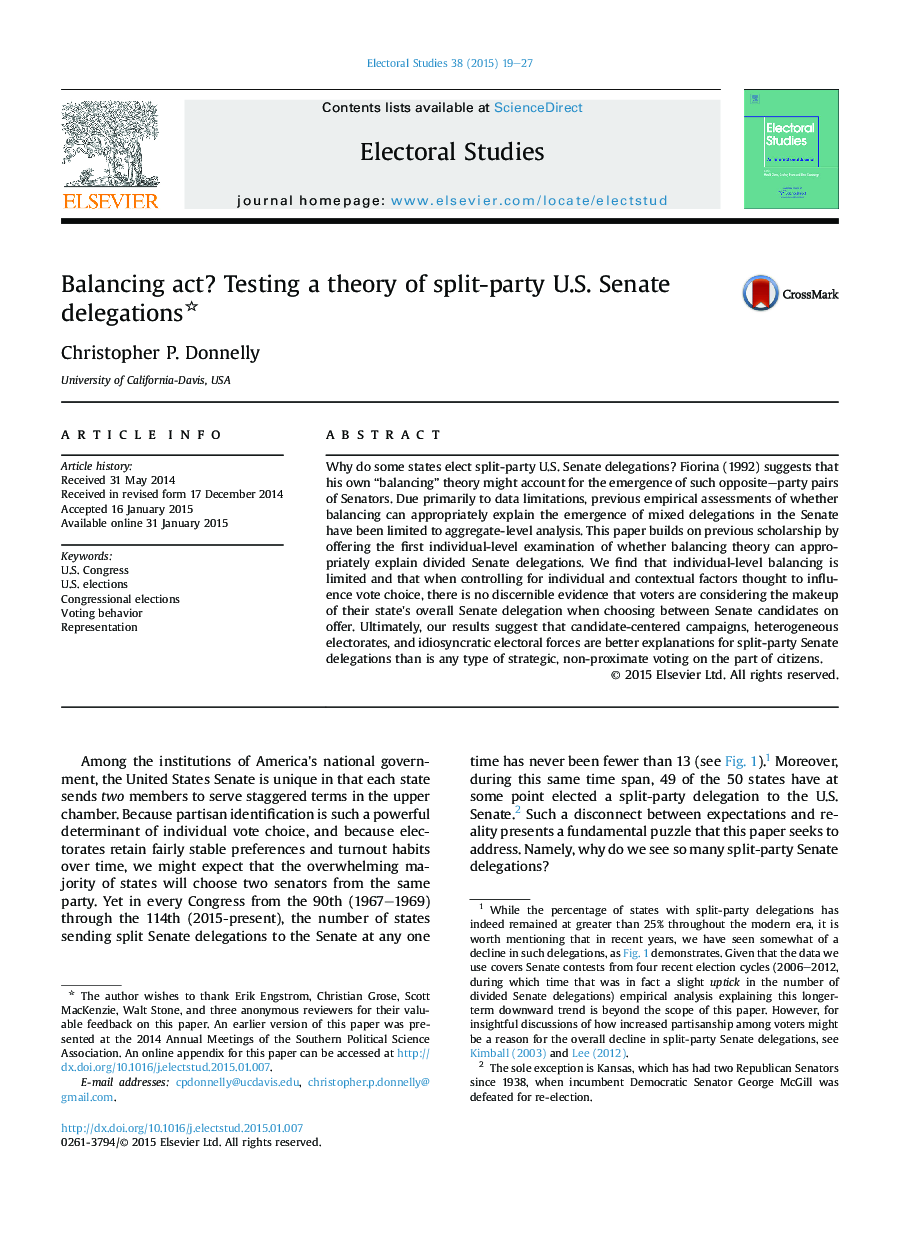| Article ID | Journal | Published Year | Pages | File Type |
|---|---|---|---|---|
| 1051704 | Electoral Studies | 2015 | 9 Pages |
Why do some states elect split-party U.S. Senate delegations? Fiorina (1992) suggests that his own “balancing” theory might account for the emergence of such opposite–party pairs of Senators. Due primarily to data limitations, previous empirical assessments of whether balancing can appropriately explain the emergence of mixed delegations in the Senate have been limited to aggregate-level analysis. This paper builds on previous scholarship by offering the first individual-level examination of whether balancing theory can appropriately explain divided Senate delegations. We find that individual-level balancing is limited and that when controlling for individual and contextual factors thought to influence vote choice, there is no discernible evidence that voters are considering the makeup of their state's overall Senate delegation when choosing between Senate candidates on offer. Ultimately, our results suggest that candidate-centered campaigns, heterogeneous electorates, and idiosyncratic electoral forces are better explanations for split-party Senate delegations than is any type of strategic, non-proximate voting on the part of citizens.
